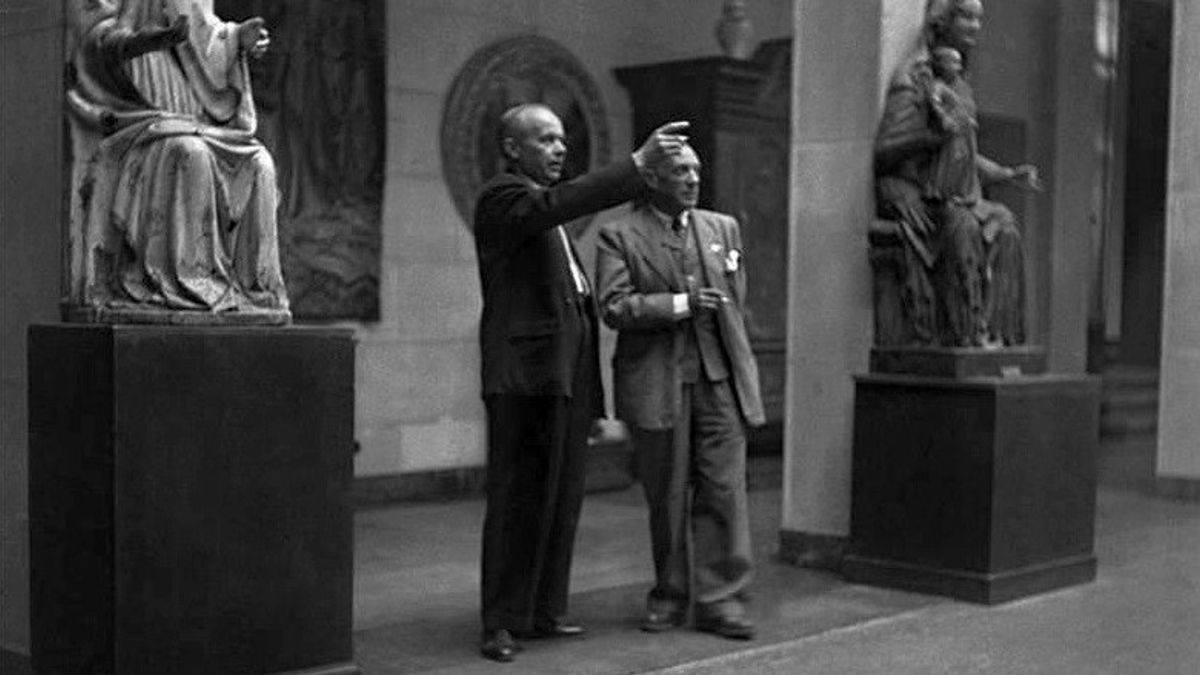
JAKARTA - A bright two-meter-wide canvas captures the tragic moment of human history that has repeatedly taken place, a faceless mob of iron-clad soldiers firmly holding their weapons and swords, ready to open fire on a crowd of helpless women and children.
Tears drenched the faces of some of these women and children as they wept, hid, and fled in fear. Others, gripped by fear, chose to meet the audience's gaze. A child, busy playing alone in blissful ignorance, ironically turns the audience's attention to an impending tragedy.
The stark contrast between armed soldiers and innocent civilians, further highlighted by the stream separating the two groups, is depicted in Pablo Picasso's painting 'Massacre in Korea'.
An anti-war painting completed by modern art experts in January 1951, just six months after the Korean War (1950-1953) erupted.
As the only Picasso artwork to capture this bloody chapter of Korean history, it was displayed in South Korea for the first time in 70 years. It is one of more than 100 works exhibited in 'Picasso, Into the Myth,' South Korea's first large-scale exhibition featuring selected collections from Musee Picasso in Paris at the Seoul Arts Center, South Korea.
Although largely overlooked compared to his peers, 'Massacre in Korea' is known as the third part of Picasso's series of anti-war paintings, along with 'Guernica' (1937)which depicts the site of the bombing of Guernica City in Spain by NAZI Germany and Fascist Italy. As well as 'The Charnel House' (1944-45) which is said to depict piles of corpses from the Holocaust.
This artwork is not based on any particular events that occurred during the Korean War. It also deliberately makes the identities and nationalities of soldiers unclear by displaying them in a mix of medieval and futuristic styles.

Picasso himself once said in an interview, the work existed only to uncover the greater nature of the brutality and irrationality of war, with cold-blooded massacres of civilians described as crimes against humanity.
However, in contrast to the anti-war paintings 'Guernica' and 'The Charnel House' set in black and white, Picasso painted 'Massacre in Korea' against a green background.
'Unlike the two previous anti-war paintings Picasso worked on when the events had taken place.' Massacre in Korea' was painted by Picasso while the war was still going on," explained Exhibition Director Seo Soun-jou, visiting the Korea Times.
"The artist must have known that war was something that would surely happen, end and be replaced by a hopeful new beginning. Through the use of green, it can be read that Picasso wanted to emphasize more messages of peace and hope than war," he continued.
He added that the artist's anti-war series provides an opportunity to reconsider the role of art in modern society.
"While many artworks in the past usually only served as home décor and items of personal preference, Picasso infused this painting with the power of conveying a critical social message," he said.
Organized by the Vichae Museum of Art, the retrospective exhibition, 'Picasso, Into the Myth,' features fragments of Picasso's life over 70 years, from the birth of cubism in the early 1900s to its final days. The items on display are not limited to his paintings, but also include sculptures, ceramics, and the 'Vollard Suite' sketch series.
Picasso revolutionized the history of Western art throughout the 20th century, primarily as one of the main inventors of cubism, with his famous work 'Les Demoiselles d'Avignon' in 1907.
"Cubism brought about a monumental change in Western art by tearing down hundreds of years of Renaissance traditions based on linear perspectives and the contrast between light and dark," seo explains.
"It was an attempt to transform a two-dimensional artwork into an abstract, three-dimensional form, by depicting objects viewed from multiple points of view at once. Cubism inspired many other modernist movements in the 20th century," he concluded.
The English, Chinese, Japanese, Arabic, and French versions are automatically generated by the AI. So there may still be inaccuracies in translating, please always see Indonesian as our main language. (system supported by DigitalSiber.id)












